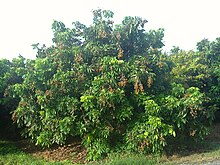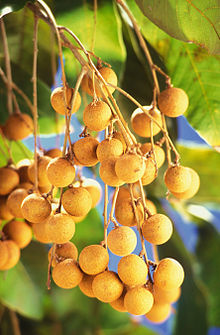To recap with pictures:
Our trip took only about half an hour and we had great views of the fishing boats as we came into Cheung Chau Harbor.
There are many bicycles and motorized little shuttles that are used by businesses. It is a nice tourist spot for Hong Kongers and there were lots of teens going to camp and other visitors. There were permanent residents, as well, and it was nice to see all ages. The fishermen go out at night, so most of the boats were docked. There were many great seafood restaurants, outside with a great view of the harbor.
We walked around the island and visited The Pak Tei temple where I shook a can of sticks until one fell out and that told my fortune. It was something like "Many opportunities are coming." The stick that falls out when you shake the can has a number that corresponds to a fortune.
The Bun Festival is held on the courts in front of the Pak Tei Temple
Bun Festival
In the 18th century, Cheung Chau was devastated by plague and infiltrated by pirates until local fishermen brought an image of the Taoist god Pak Tai to the island. Paraded through the village lanes, the deity drove away the evil spirits. Every year on the eighth day of the fourth month of the lunar calendar, the islanders organize a weeklong thanksgiving, the Bun Festival.
The centerpiece of the festival are the giant bamboo towers filled with edible buns in the courtyard of Pak Tai Temple, while the climax of the bun snatching takes place every midnight through the weeklong festival. When midnight strikes, hundreds of young men rush up to the three bun towers, tear off the buns, put them in bags or share them among the crowd. The participants are so quick that thousands of buns are plucked from the bamboo frames in a matter of minutes. The buns are then sold or distributed to anyone who did not join in the competition. This ritual was abandoned in 1978 for safety reasons, but was resumed in 2005.
Another exotic feature of the festival is the “floating colors.” Colorfully clad children are hoisted up on stilts and paraded through the crowds. Other events, including Chinese opera, lion dances and religious services, attract both locals and visitors.
Seafood restaurants
The basketball courts in front of the Pak Tei temple are where they hold the Bun Festival now. It used to be on the other side of the island. I had seen pictures at the museum. We walked down a side street and saw a display of pictures of the festival dating back many years.
Connected to the Bun Festival is a parade of children who appear to be floating in the air ("floating colors"). Using an intricate set of pipes and hidden seats, one child appears to be held up with one hand.
 
close Tung Wan Beach (东湾)
Cheung Chau’s “town” crowds the narrow sandbar linking the two hilly ends of the island. On the eastern side, only a few minutes’ walk across the island from the ferry pier is Tung Wan, a popular public beach.
In high summer, the beach can be pretty packed. Windsurfing is also popular at this time.
In waters off to the right, beyond the Warwick Hotel, Cheung Chau,
Petrogliphs dating back 3,500 years to the Bronze Age. Try clicking on picture and going to original size to read it better. Then hit back arrow.
The tiny shops and celebrated seafood restaurants highlight the commercial attributes of the island. As evening approaches, the restaurants along the streets and waterfront make ready for their main business. Given islanders’ predominantly conservative tastes, most are straightforward, Cantonese style. Seafood dominates menus — fish from tropical reefs, lobsters, prawns and shellfish can be bought from aquariums at or near the restaurants.
Renee and I had a wonderful lunch outside, looking at the harbor. We chose the fish from tanks at the restaurant. I took a video but it wouldn't play here. We had shrimp, abalone, Morning Glory veggies with octopus and shrimp paste, scallops,and wee wee prawns.
There are fresh air markets that have a great variety of fruits and vegetables.
For dessert, we had Sago with cinnamon. It's kind of like tapioca. I had mine cold. She had hers hot. (Sagois a starch extracted in the spongy center or pith, of various tropical palm stems. Sago is often produced commercially in the form of "pearls". Sago pearls can be boiled with water or milk and sugar to make a sweet sago pudding.[1] Sago pearls are similar in appearance to tapioca pearls and the two
The Dimocarpus longan tree can grow up to 6 to 7 metres in height, and the plant is very sensitive to frost. Longan trees require sandy soil and temperatures that do not typically go below 4.5 degrees Celsius (40.1 degrees Fahrenheit). Longans and lychees bear fruit at around the same time of the year.
The longan (龍眼)—translated literally as "dragon eye"[3]—is so named because it resembles an eyeball when its fruit is shelled (the black seed shows through the translucent flesh like a pupil/iris). The seed is small, round and hard, and of an enamel-like, lacquered black. The fully ripened, freshly harvested shell is bark-like, thin, and firm, making the fruit easy to shell by squeezing the fruit out as if one is "cracking" a sunflower seed. When the shell has more moisture content and is more tender, the fruit becomes less convenient to shell. The tenderness of the shell varies due to either premature harvest, variety, weather conditions, or transport/storage conditions.
Then on to a shopping trip to a large department store.
Thank you to all the wonderful friends I met there, who made the adventure something to remember fondly forever.
| ||||||||||


